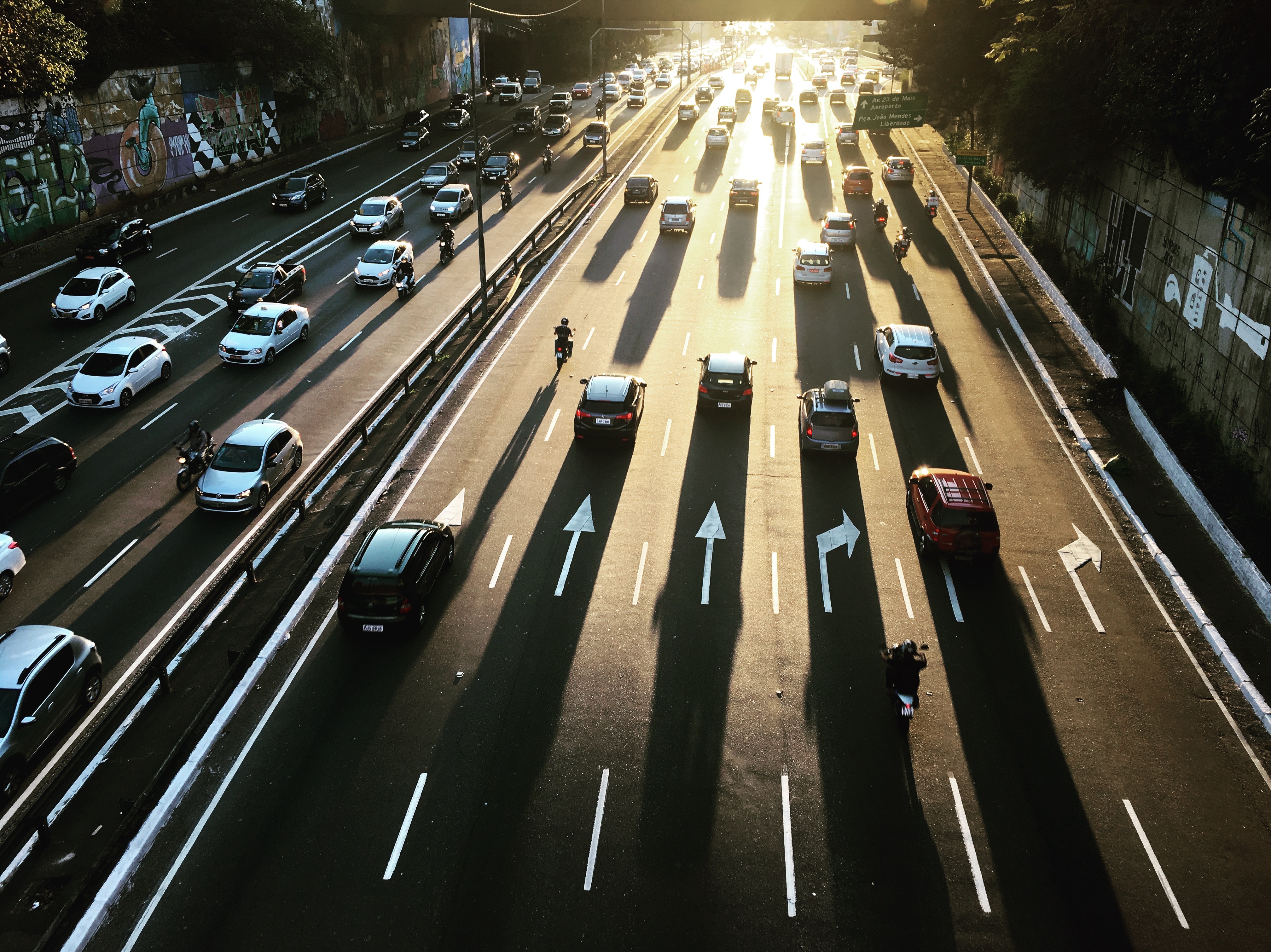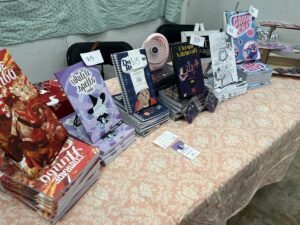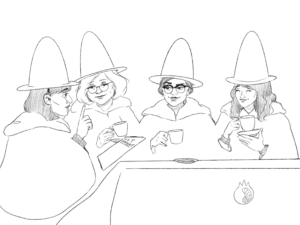For lots of people, learning to drive and getting their first car was an exciting milestone that brought newfound freedom and a level up in maturity.
But for me, it was a nightmare. The first time I drove a car at 16, I was in an empty parking lot doing slow laps and sobbing out of sheer panic with my mom in the passenger seat. Being in control of a vehicle was frightening to me, not exciting. I was sure I was going to mess up and die. I didn’t understand how others my age made it look so easy, but I hoped that the nerves would disappear and I’d “get the hang of it.”
Technically, I did. But that process would take about a decade for me.
Even after getting my license in late high school after nearly letting my learner’s permit expire, I didn’t start regularly driving until college—my first day of class was my first day driving by myself (without a parent in the passenger seat). I’ve never been great at hitting milestones on a standard schedule.
In my early 20s, even though I was fairly comfortable driving on suburban streets (aside from regularly struggling with directions and mapping routes in my head), I still avoided freeways at all costs. For my first real job after college, I drove to a local train station and rode multiple trains into downtown Dallas to avoid driving on freeways. Even just thinking about being in the driver’s seat on a freeway was enough to make me feel panicky. I didn’t want to have other cars on all sides of my vehicle. I was nervous about the speed. I didn’t like entering and exiting, as if the freeway itself were an enclosed vein, and I a foreign particle hurtling through the confined “tube,” in contrast to the openness of suburban streets.
Those were all the reasons I could give at the time, but in retrospect, I was blind to the real reason: I didn’t know how to trust myself as a driver. Though it may seem backward, in order to recognize and understand my fear, it turns out I had to conquer it first. In doing so, I also came to a better understanding of how to manage my anxiety in general, in situations completely unrelated to driving.
I hope the following lessons that I’ve taken away from my experiences will be helpful and insightful to others who struggle with anxiety and/or fear related to everyday activities.
The Opposite of Anxiety is Self-Trust (Sometimes)
When I started my current job six years ago at age 25, trains were no longer an option—it would have more than doubled my already hour-long commute, and there were no convenient stations near my new office. What’s more, access roads (also known as “frontage roads,” or the side roads that run parallel to freeways and allow drivers to enter/exit them), which I had relied on for so many years before, were also out of the picture. But I wanted the job enough that I was determined to make it work. I started out with a route that would allow me to enter freeways only when absolutely necessary, and to say in the right lane until I exited.
As cliché as it sounds, I have to admit that this process was a blessing in disguise. Dipping my toes into freeway driving out of necessity was exactly what I needed.
Little by little, I became more confident. I became braver. I became more assertive. I started taking longer freeway routes to work (reducing travel time). I started passing people and driving in multiple lanes. Sometimes, when traffic was good, I even started enjoying myself. And most surprising of all, my sense of direction improved tenfold, because I finally understood the freeways as a reference point for my mental map.
I realized that my paranoia about driving was rooted not in the external factors I couldn’t control (like the speed and cars around me), but in my ingrained belief that my subpar driving skills made it inherently unsafe for me, personally, do drive on freeways—for myself and the other drivers. That’s kind of a self-fulfilling prophecy, of course. And it was cyclical: Since I didn’t trust myself to make quick maneuvers, I wasn’t comfortable at high speeds. When you’re driving on freeways at 65mph, you don’t have time to second-guess each and every move. You can’t wait for other drivers to “let you over.” You have to see an opening and take it and know that you can. Since I doubted my own judgement and capability so strongly, I had no ability to complete that process.
Gradually testing my instincts meant that, more and more, I was able to trust myself enough to make snap decisions without second-guessing them. Driving finally became a second nature.
I think that same mental process can apply in other situations. With social anxiety, for instance, I also had to learn to stop second-guessing and over-analyzing every comment I considered making. Particularly in large groups of people, I long-struggled with “clamming up” and going quiet out of worry about coming across as annoying or unintelligent—the result being that I would often choose to say nothing instead of the “wrong” thing. But, just like freeway driving, it’s a matter of seeing an opening and going for it—seizing the moment instead of freezing in fear.
Anxiety Isn’t Always Permanent
Marcel Proust once wrote, “We are healed of suffering only by experiencing it to the full.” In my experience, the same is sometimes true for anxiety—which can be a type of suffering, after all. But for me, getting more comfortable with driving also deepened my understanding of my relationship with anxiety: Although it may never fully disappear, I’m not “stuck” with the worst version if it. I can grow and improve and learn. I suppose it was a form of exposure therapy for me.
Overcoming anxiety about a specific experience doesn’t mean the anxiety wasn’t real to begin with; it means you’ve healed in that area. Of course, it’s not helpful to become impatient with someone’s (or your own) recovery process—just like it doesn’t mean that some forms of anxiety aren’t lifelong issues. But I think it’s important to recognize that change, growth, and healing are possible and positive.
Many of us—myself strongly included—will never be completely “free” from anxiety, but I think it’s important to acknowledge that we’re not always “stuck,” either. We can grow and evolve. I went from recoiling at even the thought of accelerating onto an entrance ramp to blazing down the freeway with the radio blaring and a big smile on my face. People are not static.
Increased self-trust has helped me make great strides in both driving and social situations, yet on the flip side, I’ve had new and different anxiety issues crop up as I’ve gotten older. But if surmounting my driving obstacle taught me anything, it’s that I can learn to navigate a new and frightening situation. I just have to be patient with myself and know that I may not fully understand a new source of anxiety until I’m reflecting on it in hindsight. Last summer while traveling, I found that I was too anxious to sleep at night—awake with my heart racing in bed. In those moments, all I could do (aside from useless breathing exercises) was forgive myself and remember that simply lying down gives the body rest. But I also wished that I had been brave enough to ask for anti-anxiety meds at some point in advance of that trip, so that something could have helped me relax. Now, I’m trying out an anxiolytic for the first time in my life, and I see that as a positive development—anxiety isn’t a linear path; it’s an ongoing maze. But I know I can find my way through.
Anxiety Can Be Channeled into Proactive Precaution
Even as a confident driver, I still need to have my full route planned ahead of leaving, especially if driving to an unfamiliar location. I’m far more confident in my ability to get there than ever before, but I need to know where I’m going, or I’ll be uncomfortable—it’s not my style to throw an address into a GPS and let it guide the way.
I also still monitor those around me—especially directly behind me—with an eagle eye as I’m traveling. I want to be able to react on instinct if something goes wrong, because I will do anything I can to ensure a safe and smooth journey. I don’t want to have to get out of my car on the freeway (or anywhere) and exchange information with someone who rear-ended me, so I take care to check my rear-view mirror every time traffic slows. I also “pad” any full stops by coming to a stop with extra space and then rolling forward a bit to give the person behind me some leeway for their stop. No one ever taught me to do this, and I have no idea how common it is. It’s just become my natural system to avoid a wreck—and I have my anxiety brain to thank.
It’s always keeping me on my toes like that. Similarly, I also have anxiety about taking vacations—but I find that I’m particularly skilled at thinking of possible hiccups and planning for them. For instance, I never want to get lost because I’m confused while navigating local transportation, so I prepare by mapping out routes from my hotel to important landmarks in advance of traveling. I’m not a “let’s just wing it” person, and I probably never will be. But that’s okay!
Today, I no longer have a long commute, and I don’t miss rush hour at all. But I’ll be forever grateful that circumstances, and maybe the stars, aligned and forced me to finally face one of my greatest fears.
Last year, I was the designated driver in a carpool to a concert—a 30-mile trip that required multiple freeway changes. I was happy to offer, since I don’t drink at concerts, but in years past, I wouldn’t have been able to do so. As we climbed into the car, I asked my friends if it was surreal that I was the one driving them to the show. We all laughed together, and then one friend said, “I wasn’t going to say anything, but I never thought I’d see the day that Alicia Kania was driving ME to Dallas. I’m so proud of you.”
Same here.
But until I got there on my own, there was nothing anyone said or did that made driving easier for me. So if you’re struggling, be patient and compassionate with yourself. We all have our own invisible mountains to climb, and sometimes you can’t see the peak through the blizzard. That doesn’t mean you’ll never reach it.
Featured image source: Victor Sánchez Berruezo on Unsplash.



